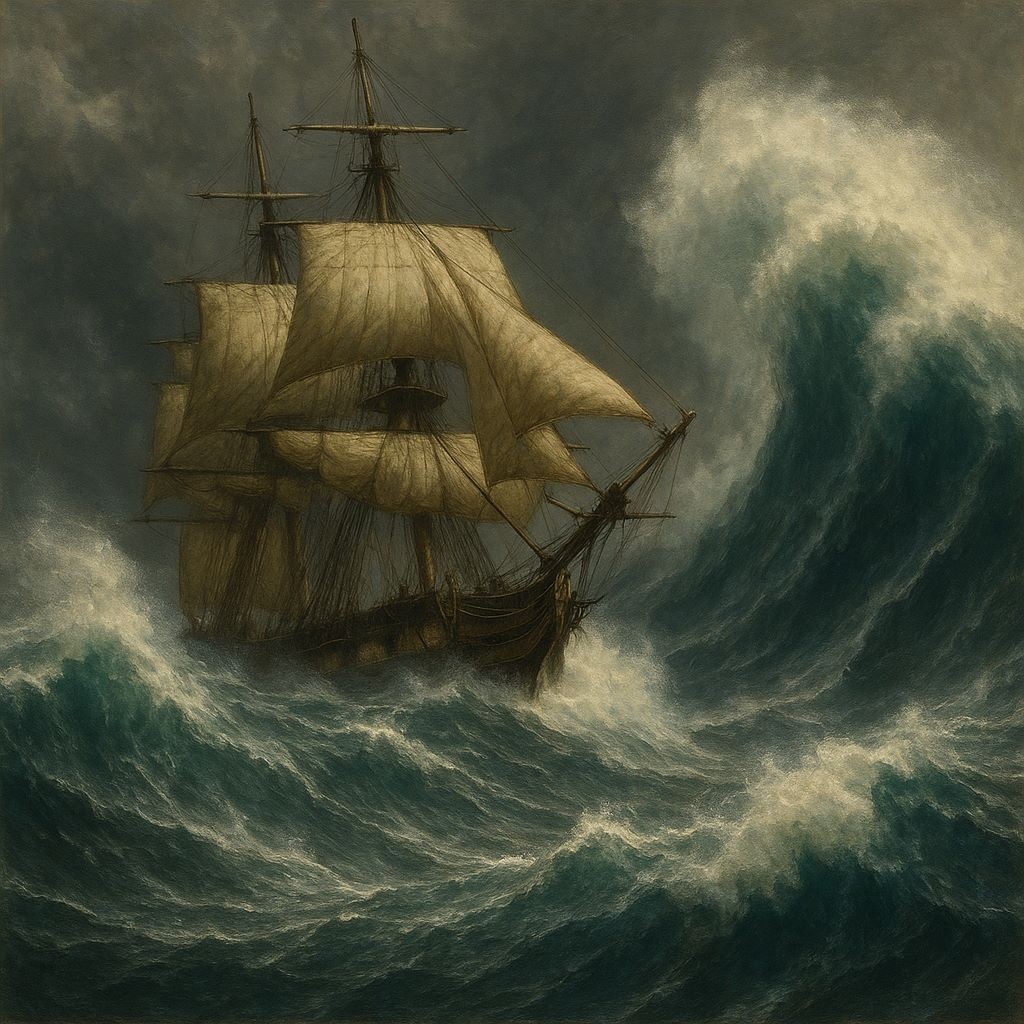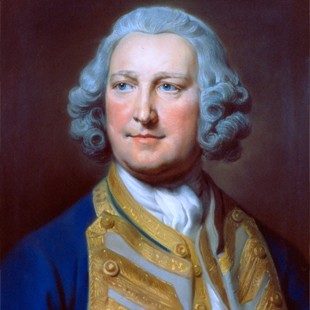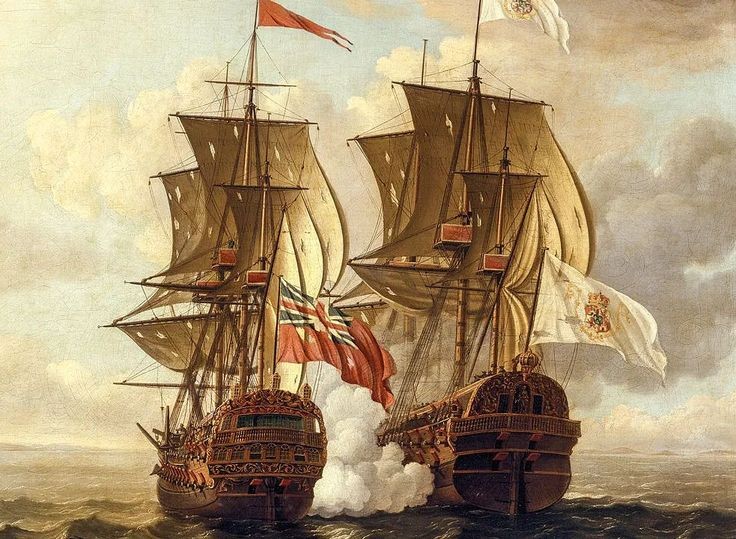
In the annals of naval history, few voyages are as fascinating as Commodore George Anson’s circumnavigation of the globe during the War of Jenkins’ Ear, part of a wider war against Spain. It was a voyage conceived by armchair strategists who ordered men across the seas with little care for their welfare and less for their fates. The Admiralty, secure in London, crafted a grand plan with the usual brutal indifference of British bureaucracy to the lives it would consume.
This story is not only an adventure of daring raids and unparalleled seamanship, but is also a parable of human endurance and bureaucratic evil. In its epic scope, Anson’s voyage shows both the strength of the British seaman and the scandalous failure of the British state to sustain him – a failure that British servicemen endure to this day.
The War of Jenkins’ Ear began in 1739 after Spanish coastguards cut off Captain Robert Jenkins’ ear, inflaming a commercial rivalry already boiling between Britain and Spain. In response the Admiralty sought to strike at the heart of Spanish wealth—their treasure routes in the Pacific.
A squadron was assembled under Commodore George Anson, an able, experienced and intelligent officer. His mission: to harass Spanish possessions along the Pacific coast of South America and capture Manila-bound galleons. It was a bold and daring plan—but almost shattered on the rocks of government stupidity.

From the outset the expedition was cursed by bureaucratic delay, incompetence and corruption. Anson received his orders in May 1740, but neither supplies nor crew were ready. Ships rotted at anchor, their crews incomplete. Incredibly, to speed things up and fill the crew lists, the Admiralty ordered the impressment of men unfit for service, many crippled by age or illness, others pulled from hospitals – the Chelsea Royal Hospital for army pensioners was stripped - barely alive. Nearly 500 such unfortunates were pressed into service. Few survived long.
They were listed as "soldiers," but they were simply unfit for even the easiest of soldiering. They were forced aboard, fed poor rations, and left to the mercy of disease and exposure. The Admiralty called it patriotism.
On September 18, 1740, Anson’s squadron left Spithead. It included six warships—Centurion (flagship), Gloucester, Severn, Pearl, Wager, and Tryal—along with two victualling ships. In total, over 1,900 men began the voyage. Over 1,400 of them would never return.
Even before they reached the Atlantic, storms made progress difficult. The ships, undermanned and poorly equipped, began to suffer. The invalids collapsed under the strain of even minimal exertion. Dysentery took hold. Officers appealed for better food and medicine but, scandalously, the Admiralty had supplied very poor-quality provisions—worm-eaten biscuits, brined meat, rotting peas and little or no medicine.
Crossing the Atlantic, they made landfall at Madeira and then St. Catherine’s Island off Brazil where they rested and refitted, but then tropical fevers struck with a vengeance. As Anson prepared to round Cape Horn—the infamous gateway to the Pacific—his squadron was already diminished in strength and the necessities that perilous passage required.
The rounding of Cape Horn, that dreadful tip of South America where the Atlantic and Pacific meet in eternal combat, was one of the most harrowing in the history of navigation. For nearly two months, the ships battled westwards, facing headwinds, ice storms, and mountainous seas in the ultimate trial for Anson's squadron, indeed for any sailing ship.
It was not merely a geographical turning point, but an implacable trial that broke men and ships alike. What followed was suffering on a scale few naval expeditions have ever endured.
Anson’s intention was to reach 56° South and then head west into the Pacific. But the weather was remorseless. The great winds of the “furious fifties” tore at their sails and battered their timbers. Ice-laden squalls swept across the decks. Waves the size of cathedrals slammed into hulls. The crews suffered horrendously, beyond the imagination of us today. Each morning revealed more men frozen, broken, sick or dead.
Worse still was the unrelenting wind and skies heavy with cloud. For a long, hard month they believed they had rounded Cape Horn and stood at the edge of the Pacific. Anson and his officers, unable to take sights of sun and stars to plot their position, relied on ‘dead reckoning’, basically guesswork. But all the navigators agreed that they had rounded the Horn and were entering the Pacific and so set a course northwest.
But it was a cruel illusion.
Tricked by the wind, their reckoning was wildly wrong. They had made no headway, no progress at all. The current and westerly gales had pushed them back and, when the skies cleared briefly to allow sights to be taken, the truth was brutally devastating: they were still off Cape Horn. After all their heroic, desperate attempts to stay afloat, they were no closer to safety than when they had begun the passage around the fearsome Horn two months earlier, and still had it all to do again.
That realisation would have utterly demoralised lesser men, but Anson pressed on.
What little rations remained were frozen in barrels. Water had to be hacked from ice. Cooking fires could not be lit in the sodden hell below decks, so there was no hot food or drink. The men’s clothing and bedding was constantly soaked with freezing seawater. The howling wind drowned out all but the loudest shouted orders. And then it got worse, much worse, the dreaded horror of scurvy appeared.
The Admiralty well knew what caused scurvy and what cured it but refused Anson’s requests for antiscorbutics and provided no lemons, no limes, no greens. Now, as a consequence, at the other end of the world in conditions healthy men would struggle to survive in, men’s gums turned black and began to slough off. Their teeth fell out. Their limbs swelled and turned purple. They lay in their hammocks unable to rise, moaning and vomiting blood.
(Aside: The Yank term ‘Limey’ comes from the later mandatory taking of lime juice to combat scurvy on British ships. Limehouse in East London gets its name from being a store of limes for ships.)
One sailor described the atmosphere below decks as a “charnel house,” where the sick lay two or three in a hammock, stacked because there was no space left to die in peace. The stench was indescribable—fetid human waste mixed with stinking bilge water and tar.
To make matters even worse, the ships separated. Severn and Pearl, driven to despair and fearing wreck, turned back eastward and abandoned the mission. Wager was wrecked off the coast of Chile after a mutiny and a descent into savagery among survivors—a brutal survival saga of its own and a story that would come to haunt the Royal Navy. Only Centurion, Gloucester and Tryal made it into the Pacific.
By April 1741, after over three months of this maritime hell, the battered remains of the squadron finally escaped the Horn’s grip. Anson’s Centurion, once manned by over 400 men, had fewer than 200 fit for duty. In Gloucester, nearly half the crew was dead. Tryal, smallest of the ships, survived God knows how. Cape Horn had not merely delayed the squadron—it had almost devoured it.
The battered ships limped northward to the island of Juan Fernández, a remote speck in the Pacific off the Chilean coast, where they found shelter and the fresh greens and water so badly needed.
The British government had sent unseaworthy ships into the world’s most treacherous waters. They had conscripted invalids and half-dead soldiers into crews meant to endure one of the most demanding voyages imaginable. They had denied them even the most basic antiscorbutic treatments. And while Anson and his men wrestled with death off Cape Horn, the men who sent them to sea dined in their London clubs, warm, dry, and utterly unaccountable. Unforgiveable. Similarly evil, criminally negligent bastards are in power today.
Anson’s rounding of Cape Horn was an act of staggering endurance. It proved his mettle as a commander and the British sailor’s raw capacity for survival. But it also stands as an enduring testament to how deeply a government can betray its own defenders and people, something we are now seeing on a grand scale today.
Anson would press on, of course, but he would never again speak of Cape Horn without great bitterness. The wind howled in his memory for years, as did the faces of the men he had buried at sea, their bodies sewn into canvas and dropped into the deep—invalids who never should have left England, much less been asked to die at the edge of the world, and the seamen that kept Britain safe.
It was not Anson’s fault. He did what he could. He had pleaded with the politicians and civilian bureaucrats at the Admiralty for fit men, better provisions, and lime juice, but was ignored. Anson made heroic efforts to keep his men alive. He instituted better hygiene and shared his men’s rations. But against starvation, disease, the wrath of the sea and the arrogant indifference of their Lordships of the Admiralty, these were doomed to fail.
After recovering on Juan Fernández, Anson raided Spanish posts along the Pacific coast—at Paita in Peru, he captured a town and burned it, securing some treasure but more importantly provisions. Each raid was carried out with great daring and courage. The Spaniards were stunned. The Pacific was a Spanish lake and non-Spanish ships almost unheard of. Anson was a ghost to them, a phantom harbinger of doom. But each engagement further taxed his dwindling crew.
In 1742, Anson took refuge on tiny Tinian, in the Marianas. Where his men briefly found paradise—fruit, fish, rest. But then a typhoon struck and carried the Centurion out to sea while many of her crew were ashore. For weeks these men, who had survived so much, feared the ship lost and they would be stranded on Tinian for good. Against all odds however, Anson returned and rescued his stranded men, their loyalty intact.
With only the Centurion remaining, Anson made his way to China, where he refitted and recruited new crew from British ships there. He then made a final gamble: to intercept the Manila galleon, a Spanish treasure ship laden with silver from the Americas.
In June 1743, off Cape Espiritu Santo in the Philippines, Anson sighted his prize— the huge Nuestra Señora de Covadonga. After a sharp fight, the galleon struck her colours. Anson had captured a treasure worth well over £100 million in today’s money.

But it was not just treasure he had captured. He had seized a symbol. Despite being abandoned by his own government, despite losing over 1,400 of the original crew, Anson had struck a blow that would echo across oceans.
He returned to Britain in 1744, hailed a hero. The Admiralty, which had carelessly consigned thousands of sailors to death, now draped themselves in Anson’s glory. Honours and rewards were heaped upon him. But few honours or reward reached the families of the dead.
When Anson became First Lord of the Admiralty in later years he sought to reform the Navy, implementing better training, organisation, and supply chains to ensure that the horrendous circumstances of his circumnavigation would never happen again – but until then scurvy would continue to kill British sailors, the Admiralty, flush with plunder preferred protecting its coffers, careless of the resulting corpses.
The story of Anson’s circumnavigation is a story of triumph earned through unimaginable suffering. It is a tale of leadership, of courage in the face of overwhelming odds—but also of the systemic neglect and criminal disregard for human life all too common in government and the governing class, alive and well today.
Today, Anson’s capture of the treasure galleon, the daring raids, and Centurion’s storm-lashed decks are remembered by a few. But we must also remember the invalids, dragged from their beds to die at sea, and the seamen who suffered or perished from starvation or scurvy because the Admiralty deemed them expendable.
And we should never forgive those in comfortable positions ashore who were responsible – and take note that their modern counterparts in government today are at least as evil.